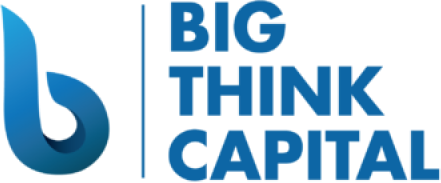Navigating Recent Federal Interest Rate Changes: A Complete Guide for Small Businesses on Maximizing Working Capital and Ensuring Sufficient Cash Flow
Estimated reading time: 5 minutes
- Understand the impact of federal interest rate changes on small businesses.
- Implement practical strategies for managing working capital.
- Strengthen financial resilience through effective cash flow management.
Table of Contents
- Understanding Federal Interest Rate Changes
- Key Impacts of Interest Rate Changes
- Practical Strategies for Managing Working Capital
- The Importance of Staying Informed
- Conclusion
- FAQ
Understanding Federal Interest Rate Changes
The Federal Reserve’s decision to adjust interest rates has far-reaching effects on the economy. These rates influence everything from the cost of loans to consumer spending patterns. In 2025, the Federal Reserve continues to navigate inflation and economic growth, leading to rate adjustments aimed at maintaining a balance between stimulating economic activity and controlling inflation.
Key Impacts of Interest Rate Changes
When the Federal Reserve raises or lowers interest rates, small businesses experience a direct impact:
- Loan Costs: Higher interest rates increase the cost of borrowing, making loans and credit facilities more expensive. Conversely, lower rates can reduce borrowing costs, making financing options more accessible.
- Cash Flow Management: As borrowing costs rise, monthly payments on existing loans may increase, necessitating better cash flow management strategies to ensure timely repayments.
- Consumer Spending: Changes in interest rates can affect consumer behavior. Higher rates may lead to decreased spending, while lower rates can increase disposable income and stimulate spending.
Practical Strategies for Managing Working Capital
Given the current interest rate environment, small businesses should adopt practical strategies to manage working capital effectively. Proper management of cash flow can buffer against rising costs and ensure smooth operations. Here are three crucial strategies:
1. Reassess Your Financing Options
It’s vital to regularly evaluate and adjust your financing strategy in response to ongoing interest rate changes. Here’s how:
- Explore Different Products: Consider diversifying the types of financing you utilize. Options such as working capital advances, merchant cash advances, and lines of credit can provide flexible access to funds without the burden of long-term debt.
- SBA Loans: The Small Business Administration (SBA) offers loan programs that often have fixed interest rates, which can be beneficial in times of fluctuating rates. These loans are particularly attractive for businesses needing significant capital to expand.
- Use Equipment Financing: If your business needs new equipment, seek equipment financing options that typically require lower initial outlays than traditional loans. This can preserve cash flow while allowing for necessary upgrades.
2. Improve Cash Flow Management
Effective cash flow management is critical in ensuring that your business can respond to financial changes promptly. Consider these tactics:
- Implement Forecasting Models: Regularly analyze your revenue and expenses. Create cash flow forecasts to anticipate potential shortfalls and spending spikes, allowing you to plan accordingly.
- Optimize Inventory Levels: Managing inventory effectively can significantly impact your working capital. Reduce excess inventory and increase turnover rates to free up cash.
- Negotiate Payment Terms: Work with suppliers to negotiate better payment terms that allow extended periods before payment is due, thus improving your liquidity during tighter cash flow situations.
3. Strengthen Financial Resilience
In unpredictable financial environments, resilience is key. Here’s how your business can enhance its financial sturdiness:
- Maintain a Cash Reserve: Aim to keep a cash reserve that can cover 3 to 6 months of operating expenses. This financial cushion can protect against unforeseen downturns or expenses.
- Develop Creditworthiness: Regularly review your credit profile. Maintaining a strong credit score can provide access to better financing options and lower interest rates, which is crucial when the Fed raises rates.
- Educate and Empower Your Team: Ensure your team is informed about financial strategies and cash flow management. A knowledgeable team is crucial to executing effective financial strategies.
The Importance of Staying Informed
Being proactive and informed about your financing options can help navigate the complexities of interest rates. As the landscape evolves, consider subscribing to financial news and utilizing tools that provide updates on market conditions. Staying informed allows your business to react swiftly to financial changes.
Conclusion
In the current climate of fluctuating interest rates, small businesses must be vigilant in managing working capital and cash flow. By reassessing financing options, improving cash flow management, and strengthening financial resilience, businesses can maneuver through challenging economic environments successfully.
At Big Think Capital, we specialize in helping small businesses secure the funding they need to thrive, regardless of market conditions. Our diverse range of lending solutions, including working capital advances, SBA loans, and merchant cash advances, can provide the flexible financial support you require.
Don’t navigate these financial waters alone. Visit us at bigthinkcapital.com or speak with one of our funding experts to learn how we can help you optimize your business’s financial strategy today. Secure the funding you need and position your business for success in 2025 and beyond.
FAQ
- What are federal interest rate changes?: Federal interest rate changes refer to the adjustments made by the Federal Reserve to influence borrowing costs and economic activity.
- How do interest rates affect small businesses?: Interest rates can impact loan costs, cash flow management, and consumer spending, all of which are crucial for small business operations.
- What strategies can small businesses use to manage cash flow?: Small businesses can implement forecasting models, optimize inventory levels, and negotiate better payment terms with suppliers.






